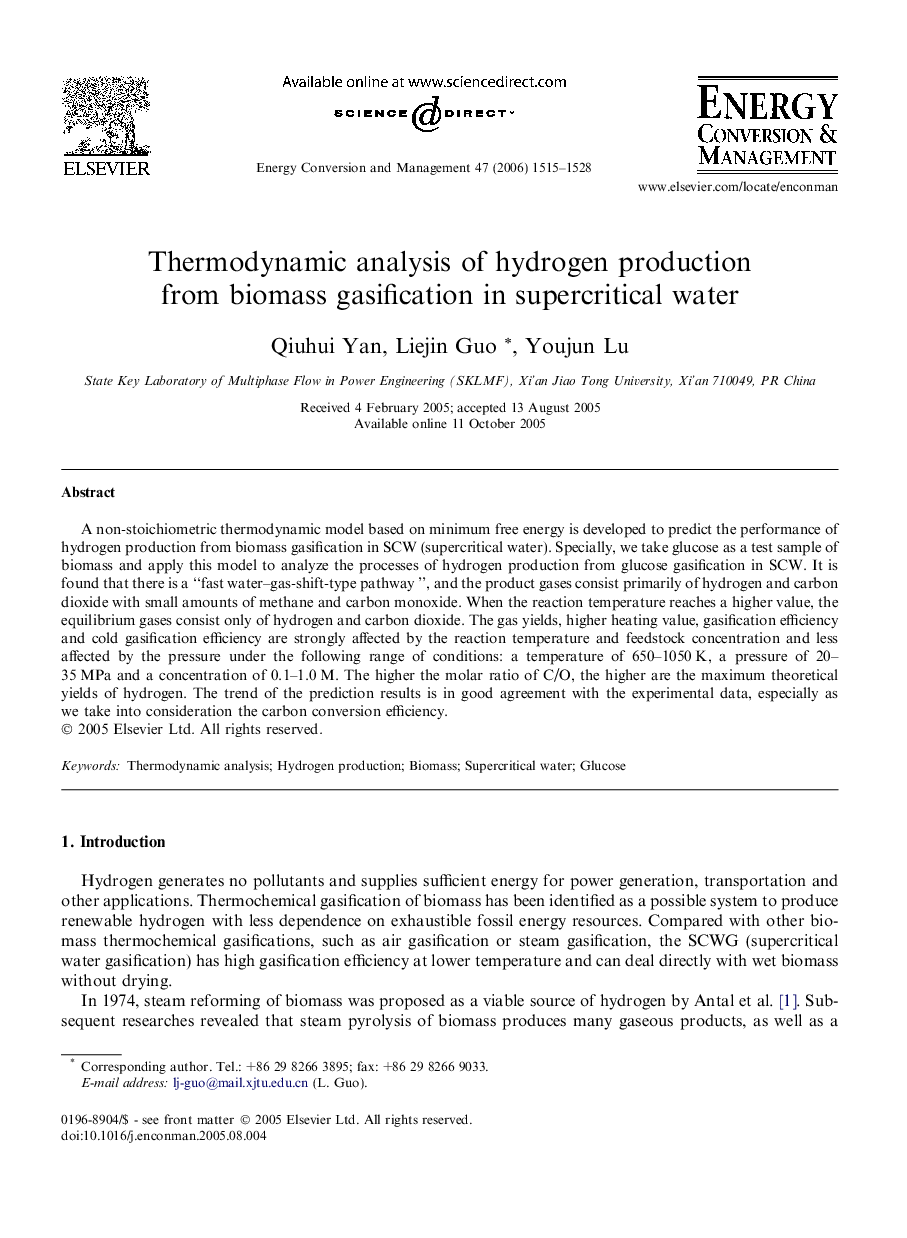| Article ID | Journal | Published Year | Pages | File Type |
|---|---|---|---|---|
| 762377 | Energy Conversion and Management | 2006 | 14 Pages |
A non-stoichiometric thermodynamic model based on minimum free energy is developed to predict the performance of hydrogen production from biomass gasification in SCW (supercritical water). Specially, we take glucose as a test sample of biomass and apply this model to analyze the processes of hydrogen production from glucose gasification in SCW. It is found that there is a “fast water–gas-shift-type pathway ”, and the product gases consist primarily of hydrogen and carbon dioxide with small amounts of methane and carbon monoxide. When the reaction temperature reaches a higher value, the equilibrium gases consist only of hydrogen and carbon dioxide. The gas yields, higher heating value, gasification efficiency and cold gasification efficiency are strongly affected by the reaction temperature and feedstock concentration and less affected by the pressure under the following range of conditions: a temperature of 650–1050 K, a pressure of 20–35 MPa and a concentration of 0.1–1.0 M. The higher the molar ratio of C/O, the higher are the maximum theoretical yields of hydrogen. The trend of the prediction results is in good agreement with the experimental data, especially as we take into consideration the carbon conversion efficiency.
